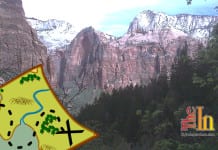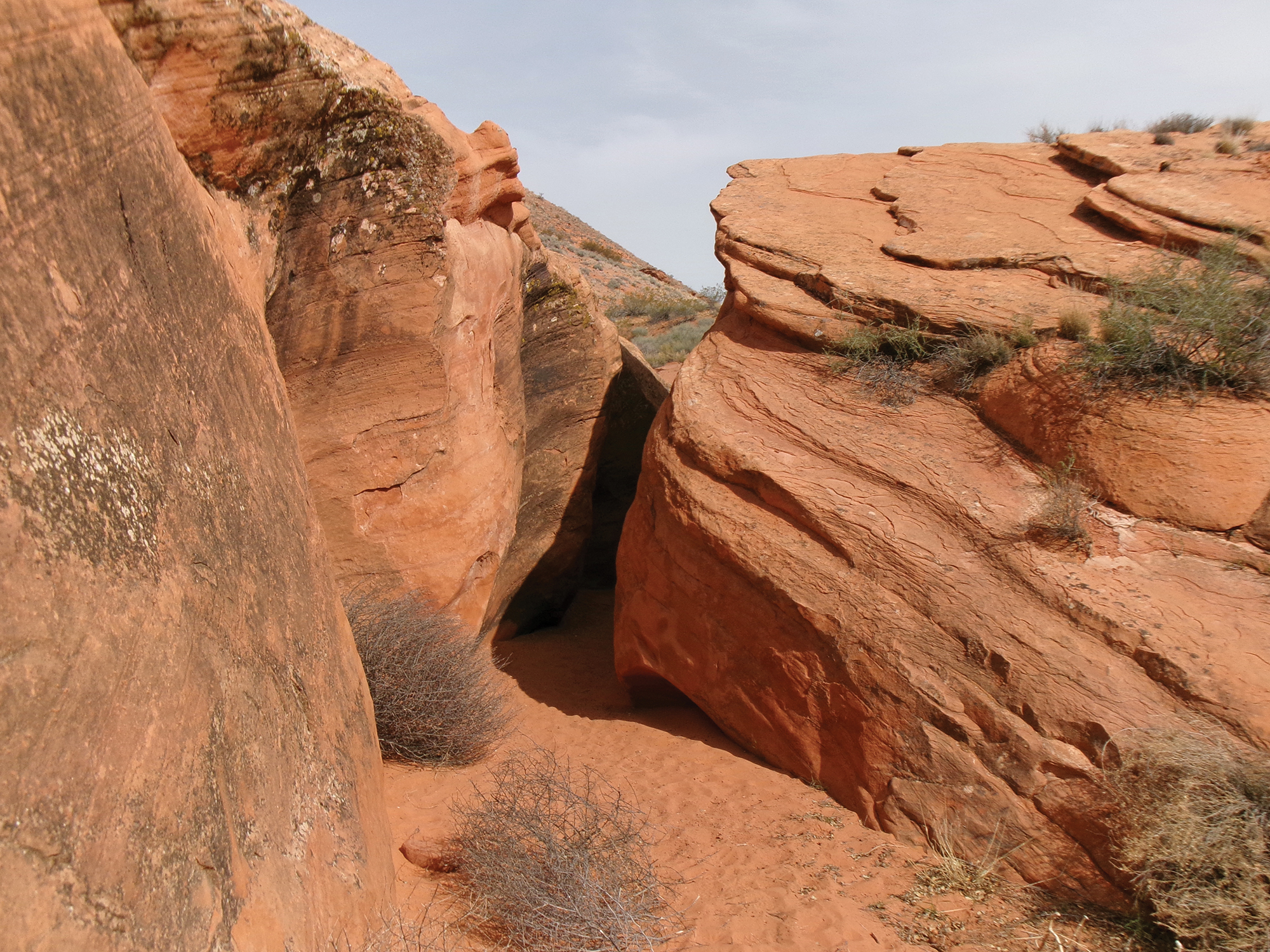
Bone Wash Trail in the Red Cliffs Desert Reserve
– By Tom Garrison –
Location: Red Cliffs Desert Reserve, Utah.
Difficulty: A moderately strenuous hike due to slogging through about two miles of loose sand.
Average Hiking Time: About 2 ½ hours at a leisurely pace with many photo stops for this 4.2-mile out-and-back hike.
Elevations: 3,077 feet trailhead elevation with an approximately 225 feet elevation gain from the trailhead to the highest point.
Family Friendly: Other than walking through a lot of loose sand, there are no obstacles preventing young children from doing this hike. We saw several kids and dogs on the hike.
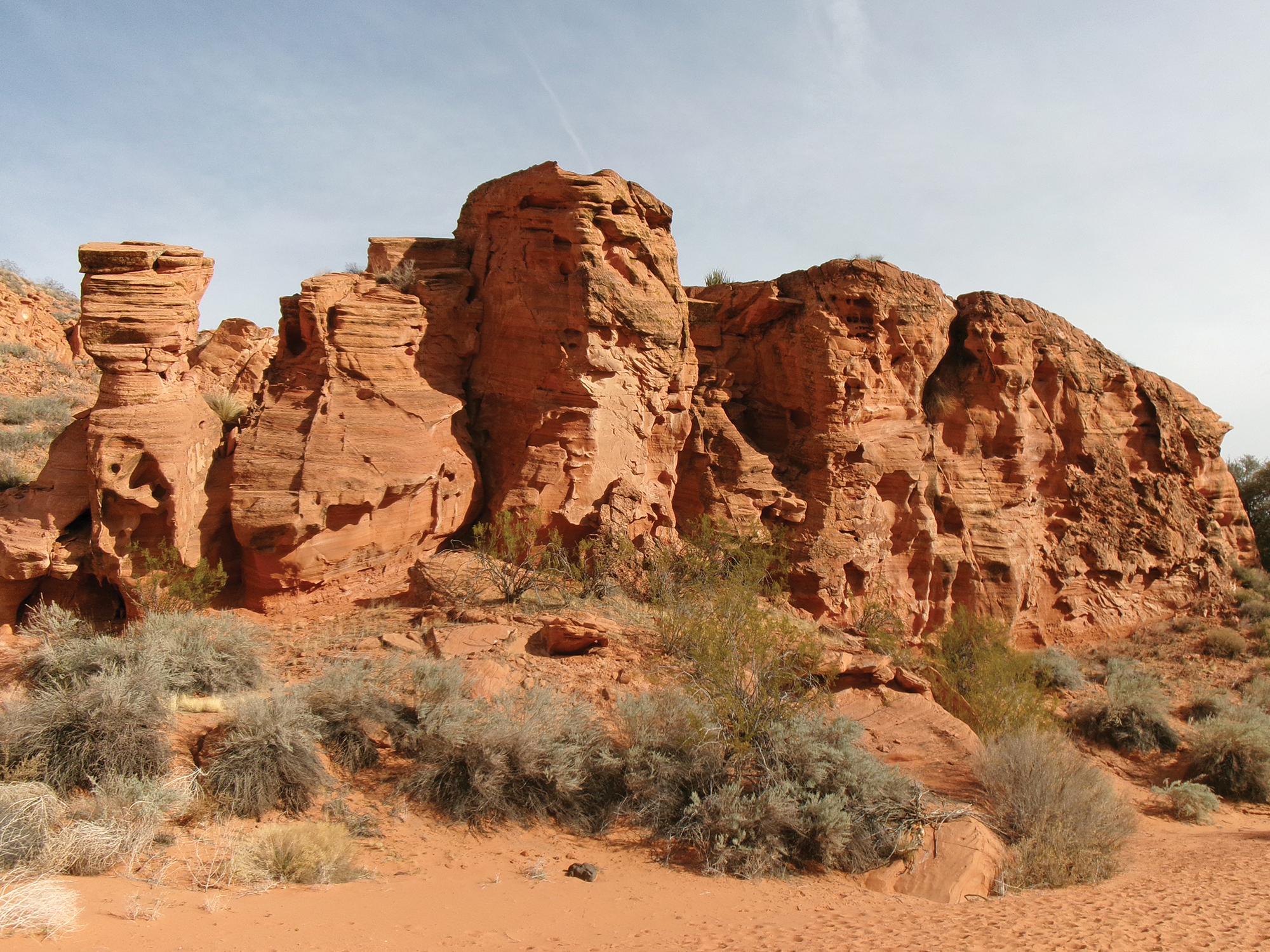
Finding the Trailhead: Drive north on Main Street in Washington City and cross under Interstate 15. Immediately after crossing under the Interstate is a four way stop with Buena Vista Boulevard being the cross street. Continue north on Main Street and at ½ mile from the intersection is another intersection with Washington Parkway. Turn left (west) onto the Parkway and very quickly, within about 100 yards, turn right (north) onto a major dirt road marked with a large sign reading “Alternative Trail Access Mill Creek & Dino Cliffs.” Stay on the main track (heading north), alongside a string of power poles in a north-south orientation, for .8 mile on this mostly good dirt road, the first section is rocky with some large dips, to the Mill Creek Trailhead which is also the Bone Wash Trailhead. The trailhead is designated by a fence with a stepover and a closed gate. The Mill Creek Trail sign is just beyond the gate. There is ample parking for several cars, a good thing since there were already five cars parked when we arrived at 9:30 am. And double that number when we returned to the trailhead 2 ½ hours later.
The great Utah southwest desert is the source of many wonders—amazing red rock formations, slot canyons, arches, side canyons, and tough flora and fauna. The latest adventure for me and my wife Deb is exploring Bone Wash Trail in the Red Cliffs Desert Reserve. It contains several of the natural wonders we love.
The Red Cliffs Desert Reserve was established in 1996 to protect a large and diverse habitat capable of sustaining wildlife populations threatened by development and habitat loss. It comprises 62,000 acres and has more than 130 miles of shared use trails for hiking, horseback riding, and mountain biking. Three ecosystems—the Mojave Desert, the Great Basin Desert, and the Colorado Plateau—merge in southwestern Utah and the Reserve reflects the biological diversity of this unique region.
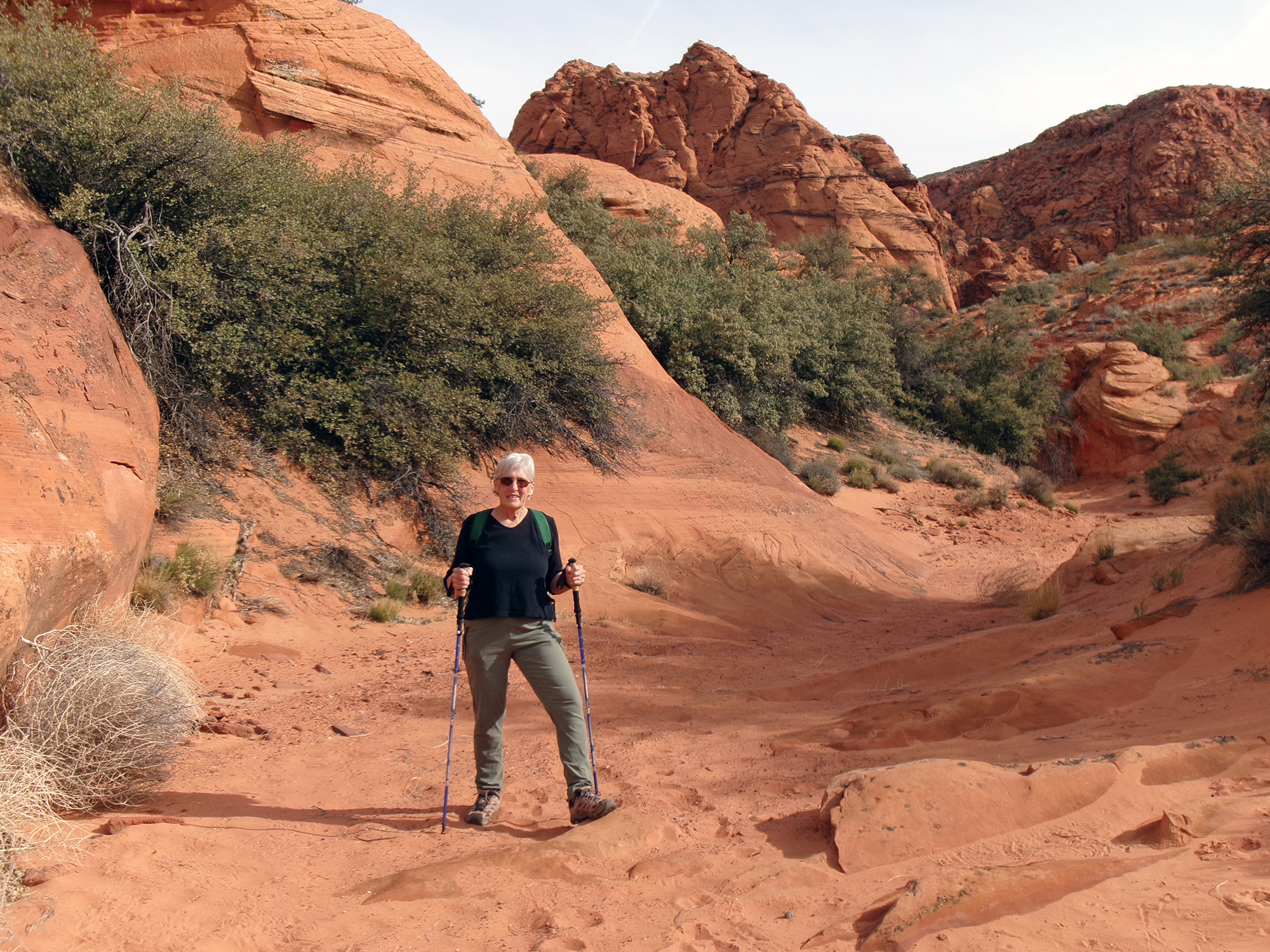
The Mill Creek Trailhead has an elevation of 3,077 feet. The hike is about 4.2 miles round trip with a 225 feet elevation change that took us about 2 ½ hours at a leisurely pace. The temperature was in the low-50s with a hazy overcast sky for our early spring (late March) hike. We followed Mill Creek Trail north about .3 mile to the signed Bone Wash Trail junction and took the trail (actually a fairly wide dirt road) to the right (northeast).
After about .6 mile from the junction we reached a pumping station and went down a short incline into Bone Wash. The wide sandy wash is the trail for the next .5 miles. A half mile through loose sand is not much fun, but we were distracted by the views and close by red rock formations with weird erosion patterns. Approximately .5 miles along Bone Wash (about 1.4 miles from the trailhead) we reached the Elephant Arch Trail junction to the right. Unsigned Bone Wash Trail continues to the left (north) through a small 100 feet long slot.
We had been at this junction a couple of times going to Elephant Arch. This time we were going to explore new territory in upper Bone Wash.
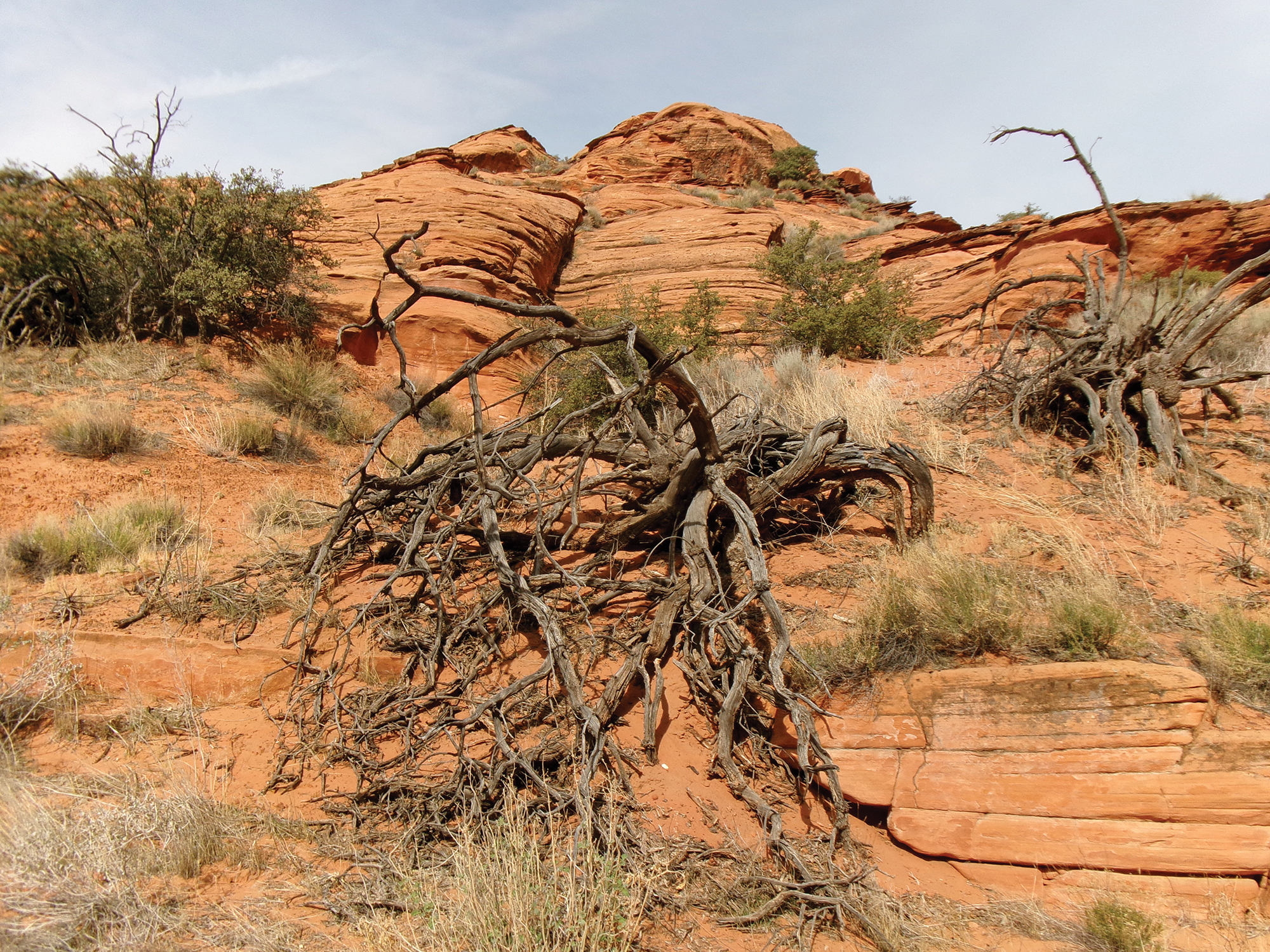
Upper Bone Wash widens into a larger red sandstone canyon with numerous strange sandstone formations, small arches, side canyons to explore, and a large box canyon at the end. Unfortunately, most of this section of the trail continues to be soft sand. The varied red sandstone formations are alone worth the hike. About .7 mile from the Elephant Arch junction (2.1 miles from the trailhead) we reached the head of a box canyon—the end of the signed trail.
If you want more exploring, there is a user trail about 100 yards south of the end of the box canyon on the left (west) as you walk up canyon. This takes you around the box canyon and further up the wash. Be aware that this user trail requires frequent rock scrambling. This user trail goes another .8 mile one way from the box canyon. It ends for most people where the canyon narrows and large rock falls obstruct further travel.
We began our return trip upon reaching the head of the box canyon. We did not take the user trail. You might want to, but we are both in our 70s and decided against rock scrambling and another 1.6 miles round trip added to our hike.
During our hike, we saw and talked to more than 35 people. I always asked if they were going to Elephant Arch. Everyone answered “yes.” Not surprisingly, we did not see another soul in upper Bone Wash. If you want a hike that isn’t crowded and the latter part is spectacular, give Bone Wash Trail a try.



